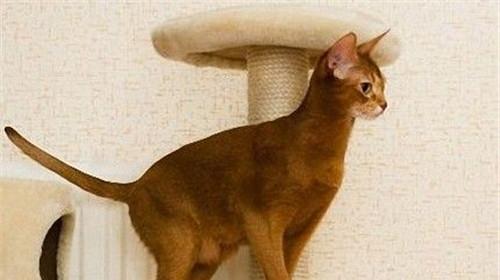
Abyssinian cat (details)
The beating heart often symbolizes the vitality of life, and once there is a problem with the heart, it is often what people worry about the most.
1. What is this disease?
Hypertrophic cardiomyopathy in cats is a disease with concentric hypertrophy of the ventricular wall (primary left ventricle) and papillary muscles as the main morphological changes.
2. Hypertrophic cardiomyopathy in cats
Among the heart diseases in cats, the incidence of hypertrophic cardiomyopathy can be said to be the highest. Once cats are diagnosed with this disease, they start a long-term struggle against the disease and race against time for their lives.
Three, what are the performances?
A cat with mild disease may have no symptoms at first, but as the disease progresses, the cat will experience symptoms such as increased breathing rate, weakness, exercise intolerance, tachycardia, and even difficulty breathing and fainting.
4. What cats are prone to disease?
Hypertrophic heart disease may develop when cats are approaching adulthood, and the highest incidence is in young adults (2 to 8 years old).
Keeping an eye on your cat at all times can help detect heart disease abnormalities as early as possible.
V. Check and confirm the diagnosis! High-precision instruments help a lot
The diagnosis of hypertrophic cardiomyopathy is not complicated. Experienced doctors can find abnormalities through auscultation and observation. However, to further diagnose and judge the disease, better inspection equipment is needed.
Step 1. Auscultation
Auscultation is the initial test, and a systolic murmur can be heard on the left chest wall of the affected cat, suggesting mitral regurgitation or/and obstruction of the left ventricular outflow tract.
The second step. X-ray examination
X-ray film can directly see whether the heart contour is enlarged. The severe cat X-ray film includes obvious enlargement of left atrium and left ventricle, different degrees of local pulmonary edema, pleural effusion and so on.
Step 3. ECG
If a cat's electrocardiogram is checked, it may be found that the sick cat has an arrhythmia and tachycardia.
Step 4. Ultrasound Scan
If you want the fastest and most effective diagnosis, it is best to do an ultrasound of the cat's heart, especially echocardiography is the most sensitive for the diagnosis of hypertrophic heart disease.
Due to the different conditions of pet hospitals, when diagnosing heart diseases, you should try to choose a hospital with higher-end instruments, such as a hospital with echocardiography equipment to diagnose cats. It is also very important whether the doctor is experienced and can correctly operate the instrument to interpret the results.
Six, can it be cured?
First of all, it must be bluntly stated that cats with hypertrophic cardiomyopathy cannot be cured.
The situation is grim
Once suffering from hypertrophic cardiomyopathy, cats may die of sudden heart failure, and thrombosis and pulmonary edema are also common complications. Many cats even need to go to the hospital regularly for pleural effusion, and some will be paralyzed due to thrombosis
Seven, treatment remission
There is no cure for this disease, but the development of the disease can be slowed down by taking medicines and other treatments to control arrhythmia, improve cardiac diastolic function, and prevent thrombosis.
8. Precautions during treatment
Take the medicine every day according to the doctor's request, and go to the follow-up consultation and physical examination regularly.
Reduce the cat's excitement and exercise time.
Special attention should also be paid to the diet, not to eat too salty, if necessary, follow the doctor's instructions to give the cat prescription food.
Avoid all stimulation to your cat, and avoid any behavior that will cause her to become stressed.
Even if you can't play, please accompany the cat gently and take care of the cat's last few years as best as you can.
